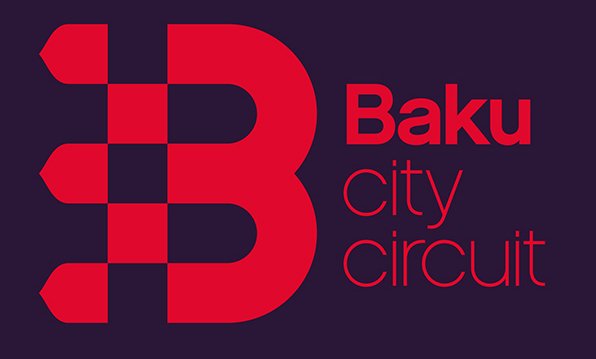-
Address:Julfa, AZ7225
The fortress in Nakhchivan Autonomous Republic. It is on the right side of the Alinjachay, on the top of the mountain of the same name of Julfa region. It was noted as “Erinjag”, “Erinjik”, “Alanjik”, “Alinja”, “Alanjug” and so on in the ancient sources. The investigators relate the name of Alinjagala with the old Turkish word “alan” having the meaning of “plain land”. It is because of the place, the fortress is situated, namely, it looks like a little playground.
Rui Qonsales Klavikho, ambassador, the Spanish diplomat of Enrikon the IIIrd, king of Kastiliya to the state of the Teymurilar in 1403-06 depicted the Alinjagala as: “The Alinjagala was situated on the precipitous mountain and was surrounded with walls and towers. There are the vineyards, gardens, corn fields, pastures, springs and pools inside the walls at the down parts of the mountain slopes. The castle or fortress are situated in the top of the mountain”. But, according to the folk etymology, the name of the fortress is guessed as “Alinjak”, that’s “take off your hand”. This is connected with the inaccessibility, invincibility of the fortress. Various versions exist about the construction of the Alinjagala. Some investigators grounding on the historical sources belong the fortress to 2 thousand years ago. The Alinjagala is depicted a very strong fortification in the epos of the “Kitabi-Dada Gorgud”. The name of Alinja was regarded as tower, mountain and river.
The historians Nasavi (XIII cent.), Sharafaddin Ali Yazdi (XV cent.), Ovliya Chalabi (XVII cent.), the Turkish traveller and others gave much more information about the Alinjagala. The Alinjagala is the symbol of loftiness, warlikeness characteristic to the nature of this land. The fortress surprises a man for its strange appearance above all. The walls of the Alinjagala go higher in the form of stairs, beginning from the slopes of the Alinja mountain and completely covers its top. The old dyke of the fortress was built of the stones brought from the villages around and baked bricks. The ruins of the eight walls in the western slope and three walls having half-round towers in the Northern slope remained. The Alinjagala mainly consists of three vast areas (North, North-West and South-West); the stone stairs were arranged in the North-West and South-West areas from the North area to climbing up.
The fortress possessing strong walls and the rock being precipitous turned it a steadfast fortification. On the upper part of the fortress remembering a small township, the ruins and foundation stones of the dwelling houses and public buildings built of baked bricks call attention. This area, in which the fortress chiefs and big feudals lived is called “the Shah throne”. The remainders of the beautiful palaces and buildings belonging to the feudals in the Alinjagala were depicted in the literature of the XX century. It was possible to keep a herd of horses and cattles before and other military ammunition in the fortress. The very qualified celadon pottery found around the fortress attracks attention. According to the investigators the celadon potteries were brought to Azerbaijan through the Big Silk Road from China. In the rein of the Azerbaijan atabaylar –the Eldanizlar power, the importance of the Alinjagala rose and turned the place of shelter, for the security of the rulers’ families, which was considered the most strategic military fortification. That time the residence of Zahida Khatin, the ruler of Nakhchivan and the treasure of the Eldanizlar were situated in the Alinjagala. During the attack of Jalaladdin Magburni, the son of Kharazm Shah Mahammad, in 1125 to Azerbaijan, Ozbak (1210-25), the ruler of the Eldaniz sheltered in the Alinjagala and in one of the battles was killed here. The Alinjagala was under the power of the Hulakular in the XIII-XIV centuries, in the 2nd half under the power of the Jalairilar. The names of the rulers Sultan Tahir, the fortress chiefs Uztamur (1343), Khaja Jovhar (1390), emir Altun (1390), Seyid Ali, Haji Saleh and Ahmad Oghulshay (1401) are known. In the 80-90 years of the XIV century the Alinjagala was the main foothold of the Azerbaijani people in the struggle against Temer and was bravely defended for 14 years. Temer marched 4 times to Alinjagala in 1386-1401 years. In 1387-92 the defenders of Alinjagala profited by the chance of Temer absence, 4 imes attacked Tabriz and thrice (1388, 1390, 1391) they were able to capture the city. About 40000 troops of Temer attacked the Alinjagala in 1393. That time some parts of the fortress defenders had left the fortress secretly under the commandership of Altun. When returned back they found the fortress doors captured by the troops of Temer and attacked them. Altun and his fighters who occupied a very correct strategic position, defeated the troop of Temer and two of the 4 tuman (of ten thousand) emirs were killed and the defenders could enter the fortress. In 1397 the joined Shaki and Georgian troops attacked the Alinjagala and freed Sultan Tahir from the encirclement after defeating Sultan Sanjar, the leader of Temer, and sent to Baghdad. For a while Seyd Ali, Haji Saleh and 3 Georgian aznaurs (leaders) headed the defence of the fortress.
The Alinjagala worried Temer very much. In 1399 on the way to Samargand from India he asks the situation in Azerbaijan, especially in the Alinjagala from the messenger who was coming from Tabriz and only 4 months later after reaching Samargand he urgently returned back to Nakhchivan. Under the leadership of 5-6 emirs he sent his troops to the Alinjagala. The fortress gave up since being uncontrolled because of the conflict occurred inside. The kutval of the fortress Ahmad Oghulshayi was arrested and taken to Temer and was killed.
Temer wonders the mightiness of the fortress after watching it. After the death of Temer (1405) the Alinjagala again underwent the power of the Jalairlar and later the Garagoyunlular. Isgandar, the ruler of the Garagoyunlular, who fought against his brother Jahanshah for the power sheltered in the Alijagala. After being killed by his son Gubad Mirza, Jahanshah occupied the Alinjagala. The Alinjagala being under the power of the Aghgoyunlular and then under the power of the Safavilar was destroyed as a result of feudal intrigates and wars.



.png?v=DqKtbngFu8-eBM77oNP77E2SV2gNF4_tUk0Y9IcK12s)

















